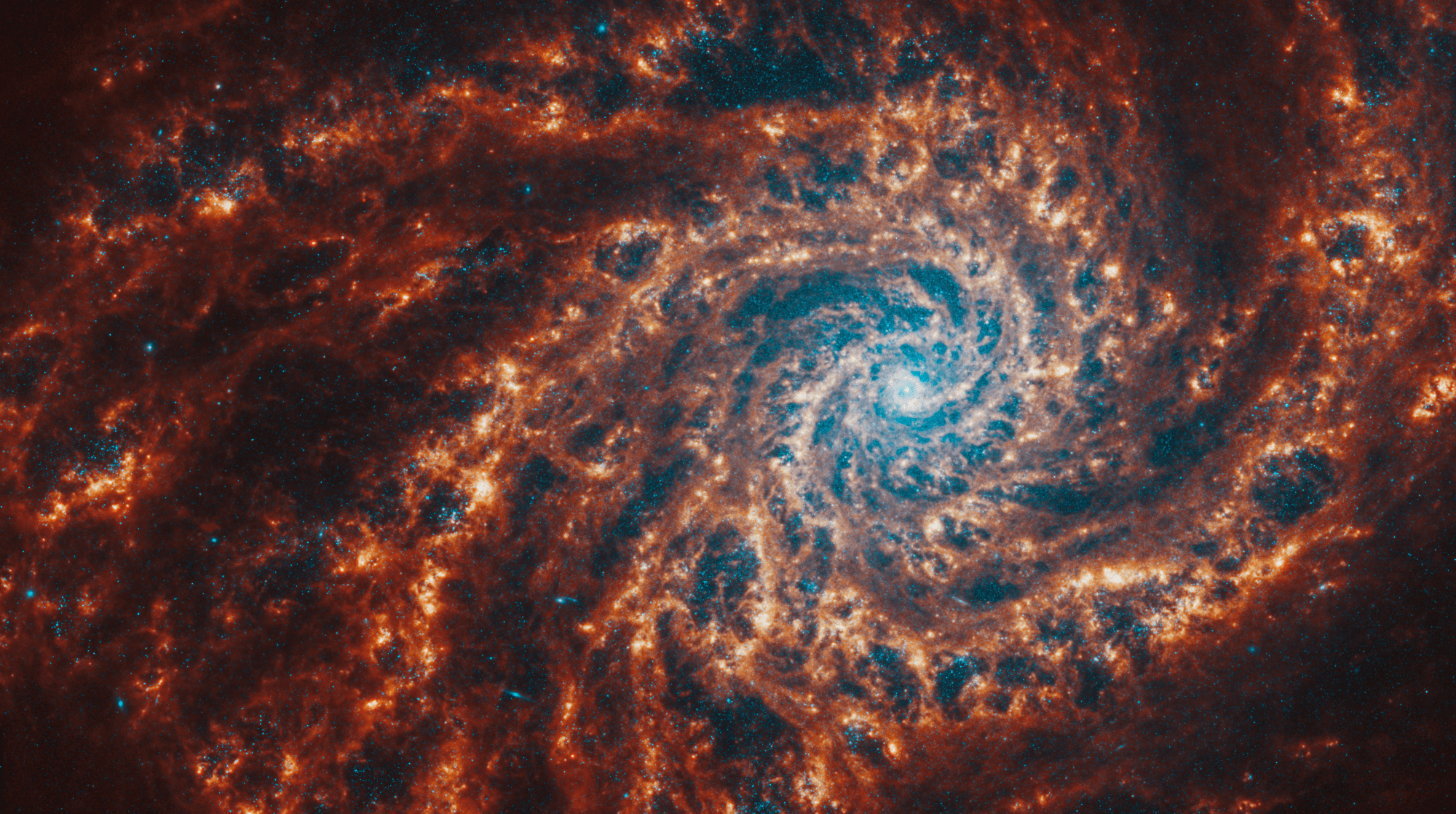
NGC 4254, a spiral galaxy, is resplendent in orange and blue in this Jan. 29, 2024, image from the James Webb Space Telescope. This is one of 19 nearby spiral galaxies recently imaged by the telescope as part of the long-standing Physics at High Angular resolution in Nearby GalaxieS (PHANGS) program supported by more than 150 astronomers worldwide.
Webb’s Near-Infrared Camera captured millions of stars in these images, which sparkle in blue tones, while the telescope’s Mid-Infrared Instrument data highlights glowing dust, showing us where it exists around and between stars.
Explore the intricacies of spiral galaxies in this deep dive.
Image Credit: NASA, ESA, CSA, STScI, Janice Lee (STScI), Thomas Williams (Oxford), and the PHANGS team




























